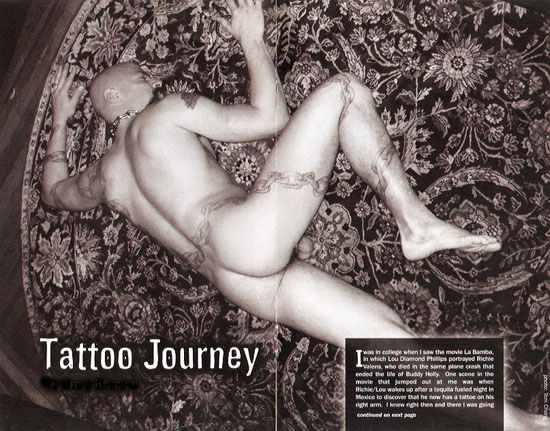**I posted this before, and I am told there are still spots available**
For those of you in NYC who are interested in learning more about S/M, a special educational opportunity is available starting in January 2014. A novices course is being led by my friend Gil. It is an excellent opportunity to learn in a safe and supportive environment. I know, because I took this course myself, many years back. It meets Sunday afternoons in January, February and March and it covers the basics like rope bondage, spanking and flogging, to more advanced play like electro and mummification.
See below for specific details.
—Metal

TES (The Eulenspiegel Society) is sponsoring the Men’s Group Series for NOVICES in S/M, beginning January 5, 2014
THIS COURSE IS ONLY OFFERED ONCE A YEAR.
For the 25th year, Gil K will conduct a course consisting of 6 four-hour S/M workshops for both “Tops” and “bottoms” who have little or no experience (or who simply want to brush up on their skills). It is open to men who are at least 19 years of age, and is limited to 24 attendees maximum. You do not have to be gay or a TES member, but attendees must feel comfortable being nude at times (sessions 3, 4, 5, and 6) and working with other men. Everyone participates as both top and bottom, as we demonstrate and workshop everything in a way that is enjoyable, fun, but educational.
Among the areas covered will be basic bondage, spanking and flogging, tit and genitorture, rope harnesses, things that pinch, mummification, and electricity (see the schedule below). The course meets every other Sunday afternoon from 3-7 pm, beginning January 5. There is a one-time fee of $30 for TES members or $40 for non-members that covers all the supplies, notes, and refreshments for the course.
Here is the schedule:
1. Intro to S/M; Being a Good Top/bottom; Basic Rope Bondage, 1/5/14
2. Spanking and Flogging; handout: Caning, 1/19/14
3. Gags/Blindfolds; Tit Play & Genitorture (including Abrasion & Bruising), 2/2/14
4. Rope Harnesses; Things That Pinch; Orchestrating the Scene (& Role Play and Fantasies), 2/16/14
5. Mummification, 3/2/14
6. Basic Electricity for Pleasure; Round Table Discussion, 3/16/14
For more information or to apply, contact Gil at novices2014@yahoo.com, and leave your name and phone number. Gil will get back to you quickly.
Only those officially signed up for the course may attend, and no new people are added after session 2. It is not a “pick-and-choose” course, so do not apply unless you can attend most of the sessions (check with Gil about other attendance requirements). The workshops are held at Gil’s home in the West Village in New York City. If you are interested, make contact as soon as possible to reserve a place.









 Before I had this website, waaaaaay back a long time ago, I was a member of Gay Male SM Activists (GMSMA), a New York City-based organization. GMSMA aimed to promote safe, sane and consensual SM through three “pillars” — education, activism and social activities. Sadly, GMSMA closed up shop a few years back. (To read about that, click
Before I had this website, waaaaaay back a long time ago, I was a member of Gay Male SM Activists (GMSMA), a New York City-based organization. GMSMA aimed to promote safe, sane and consensual SM through three “pillars” — education, activism and social activities. Sadly, GMSMA closed up shop a few years back. (To read about that, click 



 I did not want to throw my extra copies away, so Hilton over at
I did not want to throw my extra copies away, so Hilton over at 


